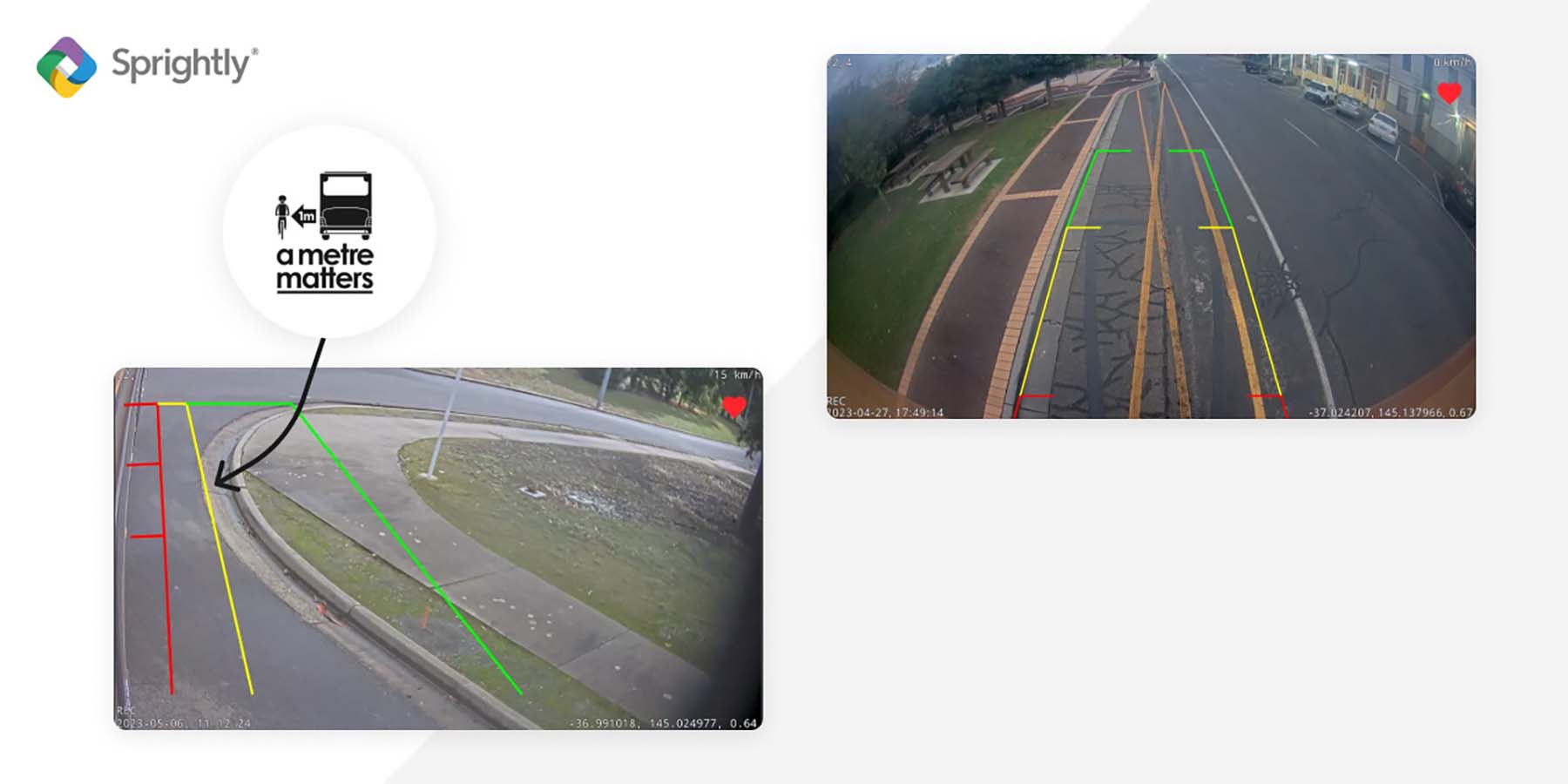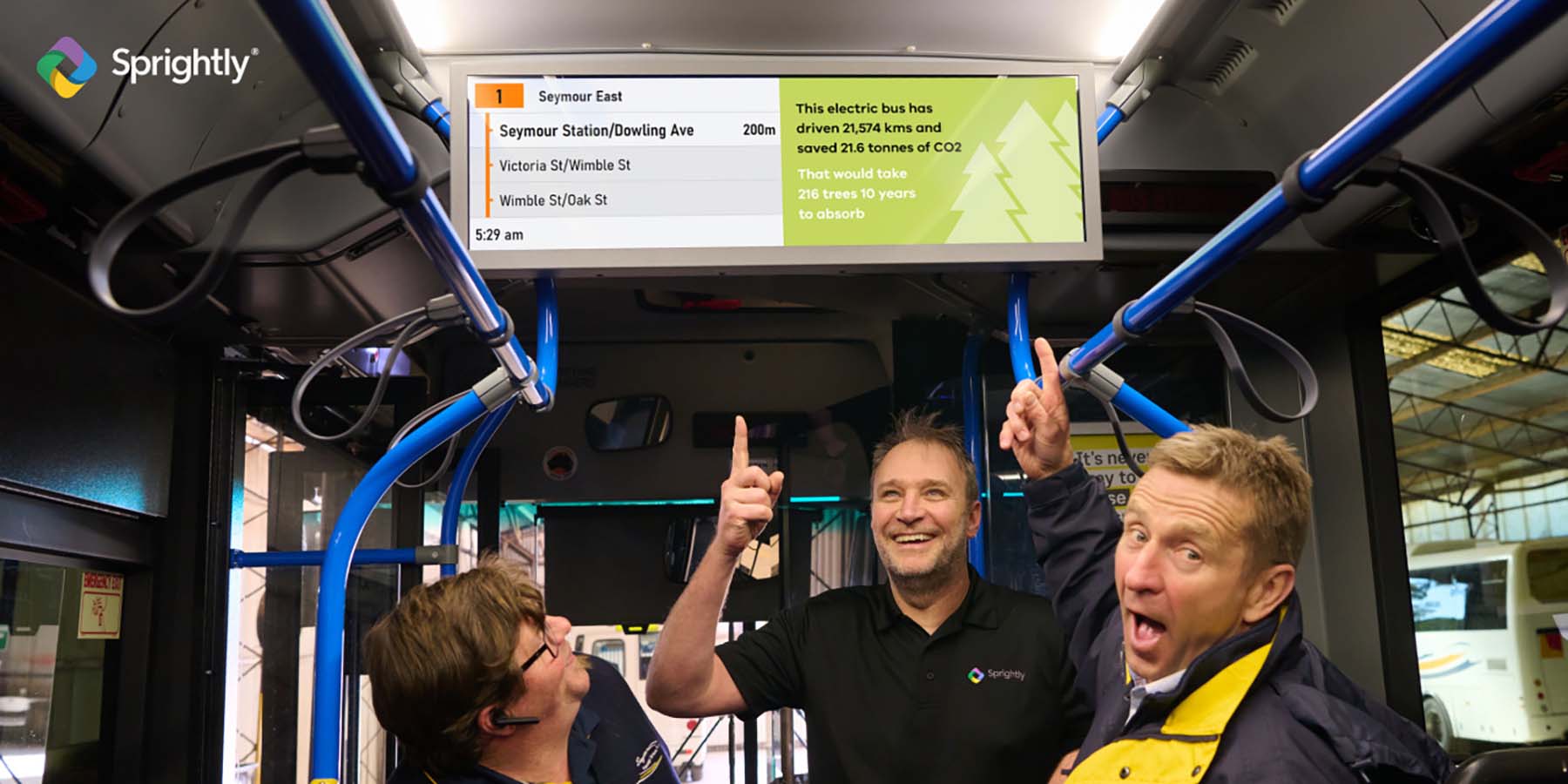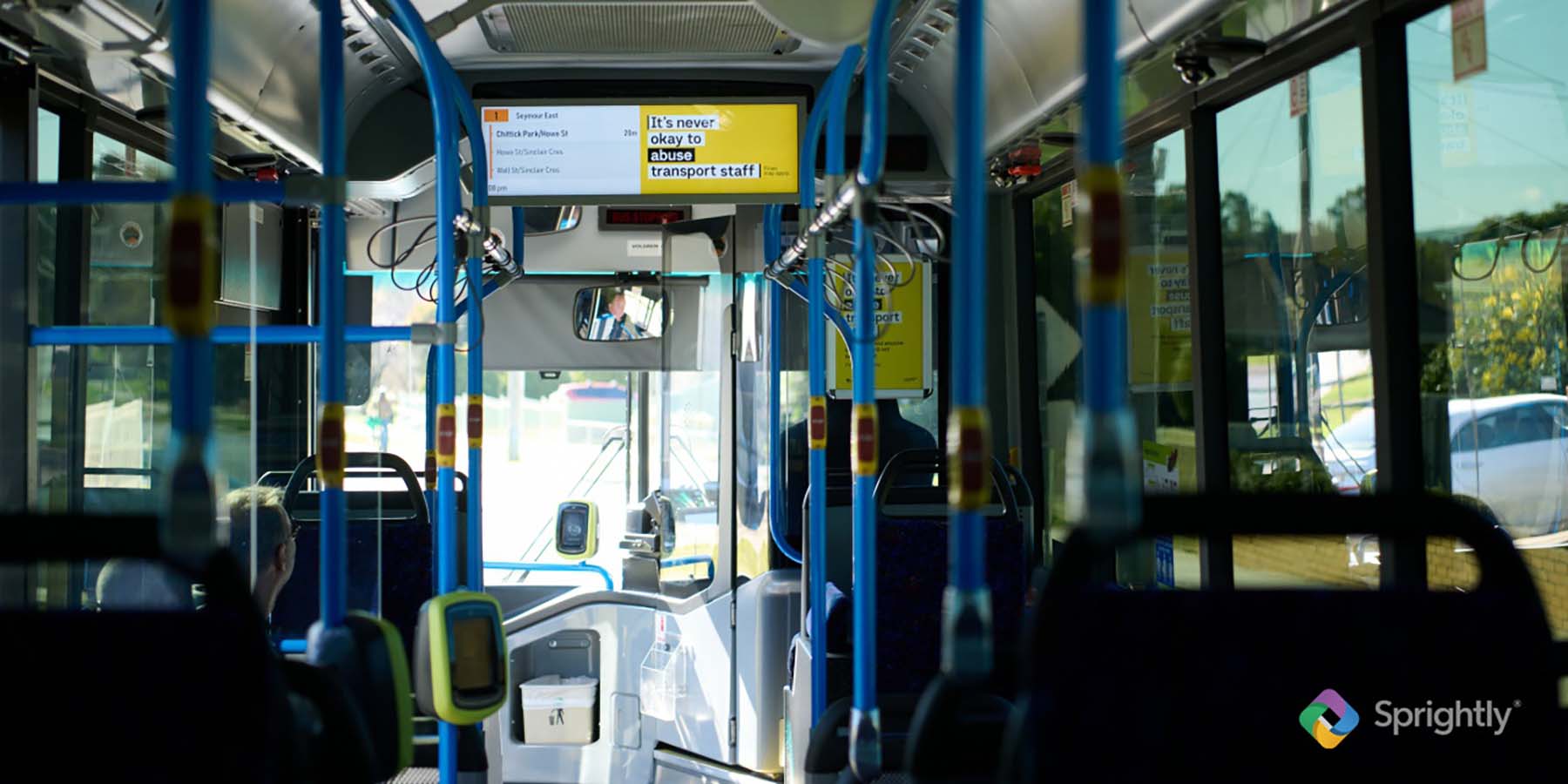The design process began with a comprehensive review of existing in-vehicle technology systems, which provided valuable insights that established the foundation for upgrades such as enhanced CCTV and new capabilities such as Passenger Information Display (PID) content.
Extensive quantitative, qualitative and ethnographic research was completed including conversations and interviews with bus operators, drivers, and various professionals. This allowed us to understand their challenges and how we could help.
Heading into the product design phase, key objectives were identified to increase safety and to enhance the on-board experience for both drivers and passengers. These included greater visibility for drivers by using CCTV as a visual aid, as well as access to real-time information for both drivers and passengers.
Our “CCTV+” has introduced visibility not previously available to drivers. Using automation we show the appropriate camera(s) when needed - left and right turn, reversing, and at the bus stop – without any manual effort from the driver. We have also included guidelines for turning and reversing, including educating drivers what a metre looks like (for the A Metre Matters road rule).
Our Driver App, with real-time route and schedule information assists drivers with unfamiliar routes, and is far easier for drivers to use than printed run sheets or cards, and makes it far easier to remain on schedule. We used contemporary automotive user interface design to reduce cognitive load and the risk of night blindness.
Our PID represents a significant upgrade to the passenger experience, with real-time Next Stop information now available at a glance. Meticulous design effort was put into our PID housing to ensure it would "look OEM" (Original Equipment Manufacturer), be easy to install, and handle the vibration found in a working bus; and into the user interface to ensure a consistent user experience across integrated transport modes.









